In theaters
We’ve already had District 9, so this week we get plain old Arabic numeral 9. And nearer Christmas we’re slated to get Nine. Number nine, number nine, number nine. Mere coincidence—or something more? And if you play them backwards do you get “Paul is dead” clues? That remains to be seen (and will likely be incomprehensible except to readers of a certain age).

In any case, this week we face Shane Acker’s 9—and it’s being released on Wednesday rather than Friday, should you feel the need to up your 9 quotient by seeing 9 on 09/09/09. (Hey, I saw the remake of The Omen on 06/06/06 and, trust me, it didn’t make much difference.) The advertisements assure us that Mr. Acker is a “visionary director,” though whether that vision is 20-20 is up in the air. That is perhaps why the film—an animated post-apocalyptic affair featuring little stitched together protagonists—is being heavily promoted on the names of Timur Bekmambetov (Wanted) and Tim Burton, who are two of the film’s producers. Even granting that the characters have a certain Burton-esque look to them, the tie-in would appear to be fairly superficial.
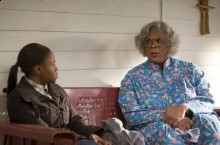
None of this, by the way, keeps 9 from being the most interesting-looking of the week’s offerings that I haven’t seen yet. Of course, when the competition includes the latest Tyler Perry movie—Tyler Perry’s I Can Do Bad All by Myself—that may not be a huge accomplishment. Perry continues to be an oddity in the filmmaking world. He peddles the same old stuff—lowbrow comedy, cheap melodrama and a splash of none-too-focused religiosity—over and over and always turns a profit. This in part is doubtless due to the fact that the man never met a corner he didn’t cut, but it also has something to do with an inherent appeal to the material—even if that appeal eludes me.
On the one hand, it’s nice to see this movie giving the terrific Taraji P. Henson work. On the other, it’s a shame that the work isn’t in something better than this looks to be. Will I be seeing it myself? Oh, almost certainly, since—as my partner in reviewing, Justin Souther, never tires of reminding me—I am the resident Tyler Perry expert, having seen everything the man’s made for the big screen. I suppose—as has also been pointed out to me—that this offers me the rare opportunity to watch an artist evolve from the very beginning. Still, I wouldn’t mind if the Darwinian process could be speeded up in some manner.

Personally, I find myself far more interested in Sorority Row. Yes, it looks like your average unnecessary remake of an already unnecessary slasher picture, The House on Sorority Row (1983). However, the trailer is—unintentionally—amusing. I mean when you’ve been pranked into thinking that you’ve accidentally killed a sorority girl is it even remotely credible that your first instinct is going to be to shove a tire-iron through her chest? No, I didn’t think so. Perhaps this seems more explicable within the context of the film itself, but I really kind of hope not. Co-writer Josh Stolberg once wrote a pretty good movie that almost nobody saw, Kids in America (2005), and then followed it up with the execrable Good Luck Chuck (2007). If nothing else, Sorority Row has to be a step up from that.
There’s also Dominic Sena’s Whiteout, which offers U.S. Marshall Kate Beckinsale pursuing a killer in Antarctica. One assumes it’s supposed to be chilling. Me, I’m only going to be happy if the killer meets an untimely end in a penguin stampede. Since that seems unlikely, I’m probably going to sit this one out. I wish I could say the same about the uplifting, “family-approved” Broken Hill, but that’s not looking like a good bet.

On a happier note, Bobcat Goldthwait’s World’s Greatest Dad opens on Friday. The review for it appears in this week’s Xpress, but I’ll go so far as to say here that it reminded me of how good Robin Williams can be when he isn’t being Robin Williams. As a tie-in to this, the Carolina Asheville is also booking Goldthwait’s previous movie, Sleeping Dogs Lie (2006), which played here briefly back in early 2007. It’s actually a pretty good movie—maybe a little more than pretty good. The film starts from a genuinely shocking premise: A young woman (Melinda Page Hamilton) has a too-intimate encounter with her dog—and unwisely confesses this to her boyfriend years later. If you can get past the basic plot device, you might well find a pretty funny, truly thoughtful examination of the desirability of complete honesty.
The indie-ish Paper Heart, which you’ll also find reviewed in Wednesday’s Xpress, was scheduled to open this Friday, but it just (as in just a minute before I typed this) got moved to Friday, Sept. 18. But there’s no shortage of worthy titles still kicking locally—from In the Loop to Inglourious Basterds to District 9—and a few other titles which you can check out in the paper.
DVD releases

If you liked Crank, there’s no reason you won’t like Crank 2: High Voltage, which comes out this week. As I said at the time it appeared theatrically, it’s more of the same, only more so. Filmmakers Neveldine/Taylor hone their skills as purveyors of bad taste and impossible action, all the while rewriting the definition of excess. How anyone can fail to love a movie that moves so fast it feels the need to insert a title reading, “Nine seconds later,” is more than I can fathom. I’m sure someone will be glad to tell me how that can be fathomed, but I suspect the explanation will fail to sell me on why I should be appalled rather than amused by it all.
Otherwise, the mainstream pickings are on the slim side. There’s the entertaining documentary Valentino: the Last Emperor, which is worth a look, and then there’s, well, not much else. Oddly enough, in the kiddie realm we do have Thomas the Tank Engine in Thomas and Friends: Hero of the Rails, which is also playing theatrically for two weekend matinees a week.
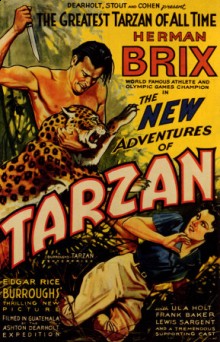
Box sets seem to be in three-for-one mode this week, since we are presented with “Triple Pack” collections of Scream, Prophecy, Halloween, Scary Movie and Hellraiser. I’ve no earthly idea why. There’s also a rash of six packs of public domain titles ganged up as Midnight Mysteries, Dangerous Dames, Femme Fatales (oughtn’t that be Femmes Fatale?), and one four-title set of Classic Tarzan. Presumably the fact that the Tarzan set includes a 12 chapter serial, The New Adventures of Tarzan (1935), makes up for the difference in volume. There’s some OK stuff in here—even some good stuff—but at $6.98 a set, I wouldn’t be holding my breath for much in the way of quality as concerns the source prints or the digital authoring. Then again, at that price, you’re not risking much. A few of the titles in these sets—Fritz Lang’s Scarlet Street (1945), Orson Welles’ The Stranger (1946)—actually qualify as, at the very least, minor classics. For that matter The New Adventures of Tarzan is probably the closest the movies of that era came to depicting Edgar Rice Burroughs’ Tarzan (Burroughs was involved in the production, in fact). Then again, you also end up with the gloriously lame Tarzan’s Revenge starring Glenn Morris as the ape man, whom one critic of the time aptly described as combining “the facial features of Broadway’s Burgess Meredith with Hollywood’s Harpo Marx, and boasting the acting ability of neither.”
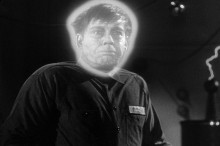
Hardly new is Universal Horror Classic Movie Archive, which came out some time back as a Best Buy exclusive and will apparently be going out in broader release on the 13th. It’s actually debatable as to whether or not one can rightly call a collection of Man Made Monster (1941), The Black Cat (1941), Horror Island (1941), Night Monster (1942) and Captive Wild Woman (1943) classic in any meaningful sense of the term. Let’s say instead that they’re slick B-picture fun—and a nice dose of nostalgia for those of us who grew up watching these movies on TV. Man Made Monster is the best, closely followed by Night Monster. Actually, Night Monster would have a slight edge if it weren’t for the fact that top-billed Bela Lugosi has a thankless role as a butler, while a role that cries out for him is handed over to Nils Asther. The irony is that this is Lugosi’s only top-billed film—apart from Dracula (1931)—from Universal.
For those who like to be daunted, Criterion is unleashing the Japanese film, The Human Condition (1961), which was originally released in three parts. Now you can get all nine-and-a-half hours at one time. I have no doubt it’s very worthy, but I’ve never seen the film, nor can I figure where I’m likely to get the time to tackle it any time soon. More adventurous admirers of Japanese cinema, however, should definitely take note.
Notable TV screenings
Some will doubtless bemoan the lack of a Dunston Checks In sighting on Fox Movie Channel this week, but this is almost certainly a temporary aberration and not to be taken too seriously. The truth is that FMC actually does have some good things on it. The problem, once again, is that they’re the same good things week after week after week. Yeah, there’s some of that with Turner Classic Movies, too, but at least there’s a wider range of the same good things—and a few not-so-run-to-death titles, too.
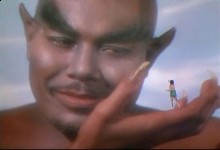
The Thief of Bagdad 8 p.m. Thursday, Sept 10., TCM
Three credited directors—Ludwig Berger, Michael Powell and Tim Whelan—and three uncredited ones—Alexander Korda, Zoltan Korda and William Cameron Menzies—somehow brought forth this Technicolor fantasy extravaganza from 1940. That it’s even coherent with that many cooks is rather remarkable. That it’s actually a terrific—albeit somewhat quaint—fantasy is actually astonishing. Sure, the effects work can be a little dodgy by today’s standards, but that matters little in terms of the spirit of the movie and its often incredible production design. Whatever failings its effects have are compensated by its genuine fairy-tale ambience—and the spirited playing of Conrad Veidt, Sabu, June Duprez, John Justin and, perhaps most of all, Rex Ingram as the Djinn Sabu releases from a bottle at about the one-hour mark. Ingram makes a splendid Djinn and gets the most out of the ripe lines he’s given to say.
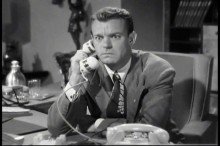
Brewster’s Millions 9:45 p.m. Friday, Sept. 11, TCM
First filmed in 1914, last filmed in 1985 as a Richard Pryor vehicle, and currently listed as “in development” for its eighth movie incarnation for 2012, Brewster’s Millions is nothing if not tenacious in its hold on filmmakers. The basic premise of a young man who inherits a million dollars that he has to fritter away in a month in order to inherit a larger sum of money offers enough room for frenetic comedy that that’s understandable. Alan Dwan’s 1945 version with Dennis O’Keefe as its spendthrift-in-the-making hero isn’t a great movie, but it’s a pleasant representation of the material—without finding the need to re-tailor that material as a star vehicle. O’Keefe was a decent enough light leading man, but hardly a major comic. As a result, this version rests mostly on the combination of the story and a great supporting cast that includes the always welcome Eddie “Rochester” Anderson and Mischa Auer. That’s quite enough if you’re looking for a nice, and not too often seen, entertainment.
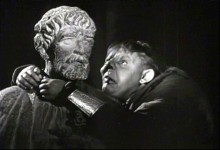
The Hunchback of Notre Dame 10 p.m. Sunday, Sept. 13, TCM
William Dieterle’s The Hunchback of Notre Dame (1939) is by far the best of the many film versions of the story. Built around a superb Charles Laughton performance as Quasimodo, the film is breathtaking in its scope and in Dieterle’s masterful filmmaking. Everything about the film is big and glossy and beautifully judged. The entire—and very large—cast is perfect in every regard. The sweep of the opening carnival is still astonishing 70 years later, but it’s really the finely wrought characterizations that bring this Hunchback to life like no other. The sequence—which uses a very quiet sound track in a most unusual manner to achieve its impact—where Quasimodo saves Esmeralda from her death sentence is startling, striking and immensely satisfying in a way few things in movies are. It takes a sterner soul than I not to tear up when Quasimodo propels her to safety, crying, “Sanctuary!”

The Trouble With Harry 8 p.m. Tuesday, Sept. 15, TCM
This charming dark comedy is probably the single most undervalued of all of Alfred Hitchcock’s 1950s films—and yet it remains my favorite of his works from that era. It’s a simple tale, but one that works on amassed complications that just never seem to stop. The trouble of the title is that Harry is dead—and more than one person thinks he or she may somehow be responsible, but in relatively innocent or accidental ways. The trick is that—apart from the inconvenience—no one much cares that he’s dead. Certainly his estranged wife (Shrirley MacLaine in her film debut) doesn’t. In fact, she’s overjoyed at Harry’s demise. Still, there’s this problem about what to do with this awkward corpse. It was a type of humor that wasn’t exactly common in 1955, but has worn rather well over the years, bringing it into an era where black comedy has become more acceptable to audiences. If you’ve never seen it, give it a shot. It may surprise you.




it’s being released on Wednesday rather than Friday, should you feel the need to up your 9 quotient by seeing 9 on 09/09/09.
Bah, if people have any sense, they’ll spend most of 09/09/09 listening to the Beatles box sets they purchase that morning.
Bah, if people have any sense, they’ll spend most of 09/09/09 listening to the Beatles box sets they purchase that morning.
Perhaps they were. Wherever they were they weren’t much in evidence in the theater from anything I observed today. (And I got my Beatles box set on 8/8 — but I haven’t listened to it yet ‘cuz someone [naming no names] hijacked it for the evening.)
I got my Beatles box set
Did you get the stereo or the mono?
Did you get the stereo or the mono?
Stereo. I have yet to be convinced of the justification of the mono set.
Stereo. I have yet to be convinced of the justification of the mono set.
The early albums were mixed for mono first and foremost, with stereo mixes being done later with much less attention to detail. Also they have that irritating early stereo thing where all drums are on one side and all the vocals on the other side. So that’s the major difference. Occasionally you get a different edit, like Helter Skelter being about a minute shorter in the mono, but generally the stereo mixes are better by this point anyway.
That said, I pre-ordered the stereo months and months ago, but haven’t picked up the mono yet.
The early albums were mixed for mono first and foremost, with stereo mixes being done later with much less attention to detail.
Yes, I know all this, but these sound worlds away from the stereo mixes that were on the Capitol albums of the 1960s (the perfect embodiment of what you’re describing). Also, comparing these to the mono CDs from 20 years ago, I’m good with the stereo. The other differnces aren’t enough to get me to shell out $275 for another box set that has less in it. In other words, I remain unconvinced that the expense can be justified.
From what I’ve read, the mono mixes are fairly different. The band were more involved with the monophonic mixes; some songs are played faster, different vocal or instrumentation tracks pop up, and some songs are edited differently.
I’m sure that one can’t go wrong with either set, though the mono one is terribly expensive.
I feel kind of silly that my first comment here is about music and not film! Oh well.
I’m sure that one can’t go wrong with either set, though the mono one is terribly expensive.
And for less discs, too.
I feel kind of silly that my first comment here is about music and not film! Oh well.
Well, considering the only thing that’s been discussed so far has been music, you’re hardly to blame.
I think I would sit through every Uwe Boll movie, Tyler Perry, AND Michael Bay movie fifty times each, just so I could have my own Beatles Box Set.
I think I would sit through every Uwe Boll movie, Tyler Perry, AND Michael Bay movie fifty times each, just so I could have my own Beatles Box Set.
There has to be an easier way to get $250.
There has to be an easier way to get $250.
Not pay rent.